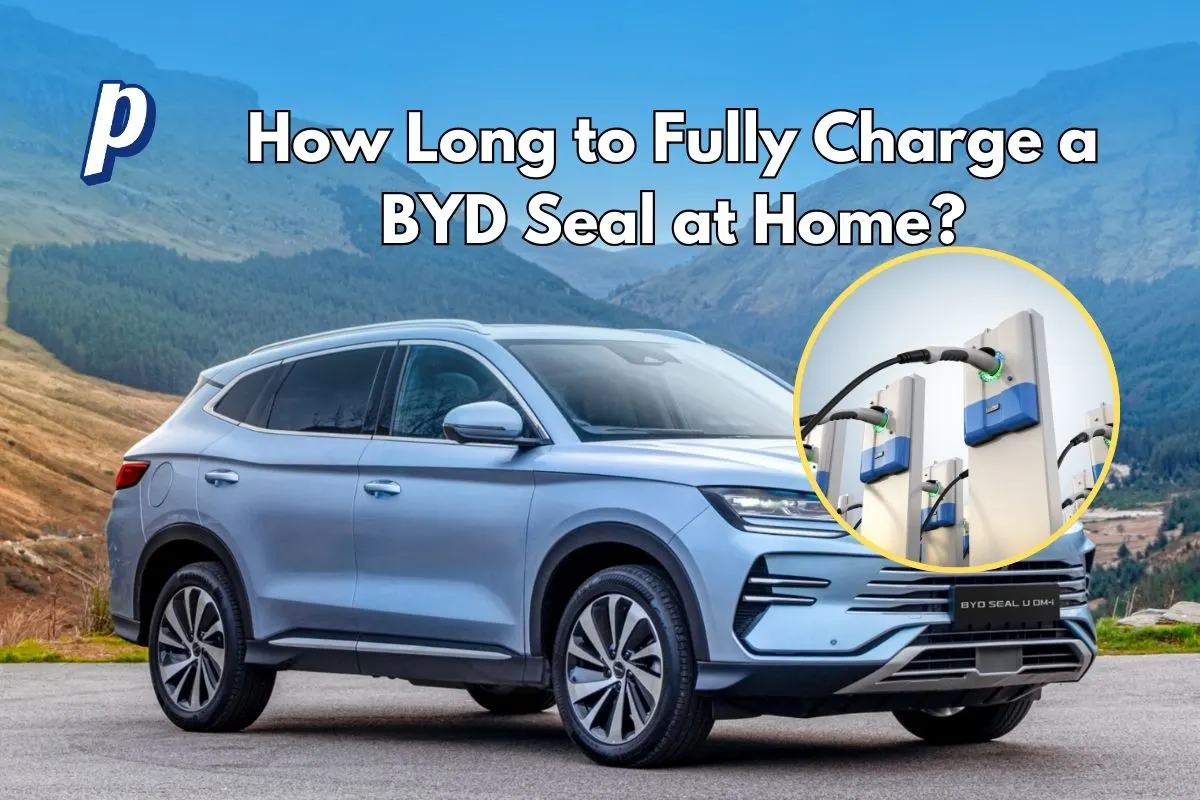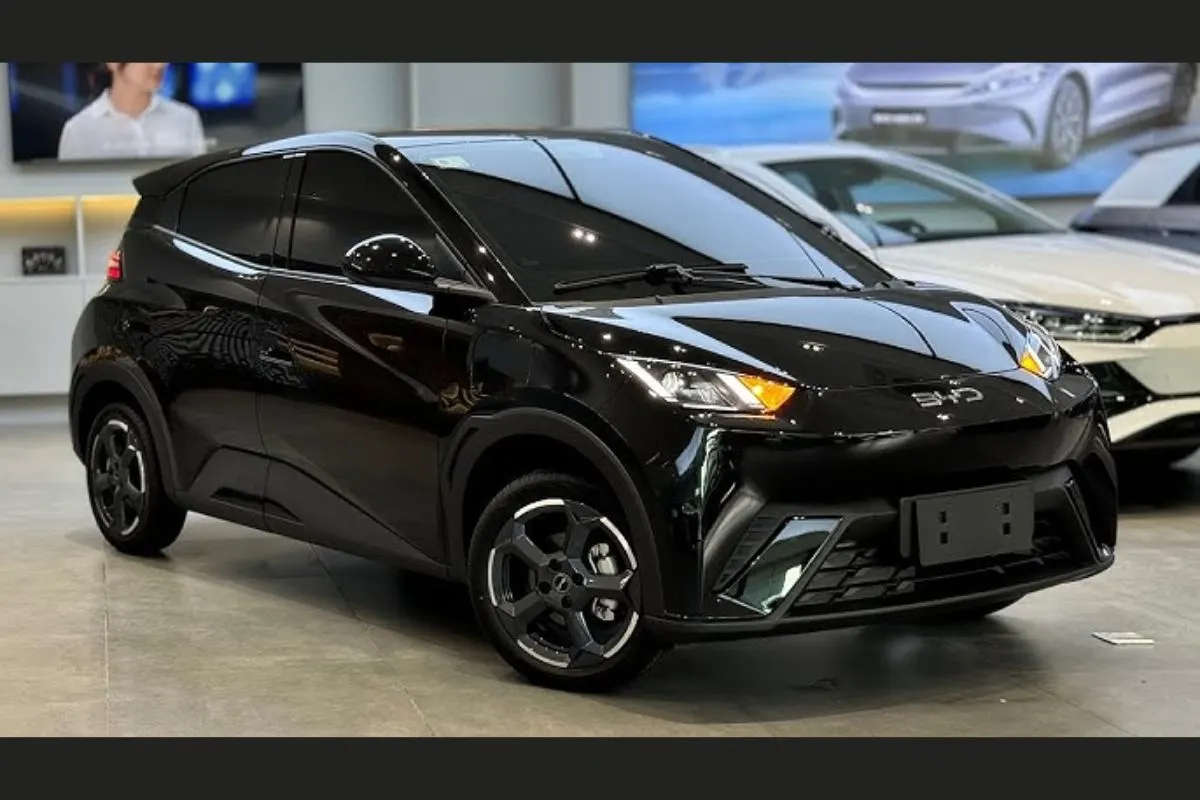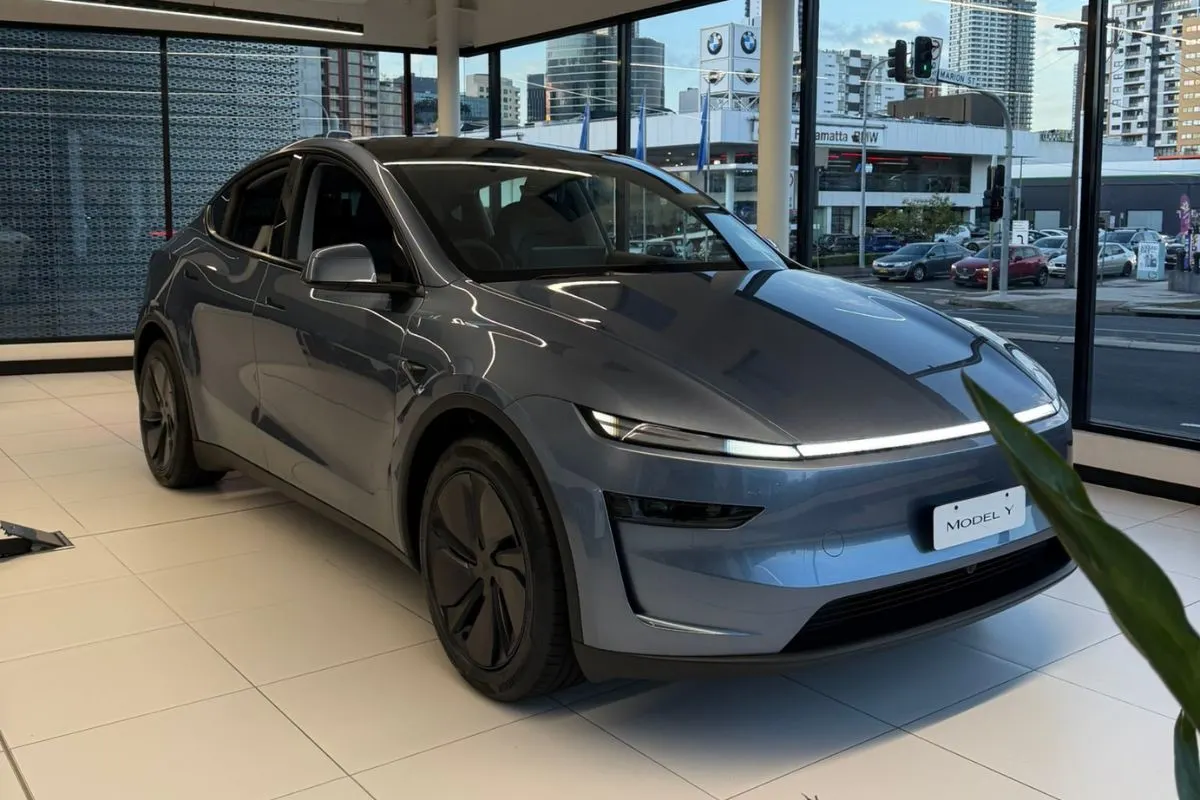The BYD Seal has emerged as a significant contender in the electric vehicle market, offering a blend of stylish design and impressive performance that positions it against established players. For owners and prospective buyers of electric vehicles like the Seal, understanding the nuances of charging, particularly at home, is crucial.
Home charging represents the cornerstone of EV ownership, providing convenience, the potential for cost savings, and a direct impact on the overall driving experience. The ability to conveniently replenish the vehicle’s battery overnight or during downtime ensures that the Seal is ready for daily use, aligning with the typical usage patterns of most drivers.
The BYD Seal is available in several variants, each with different battery capacities that directly influence the time required for charging. For instance, the Dynamic model features a battery with a usable capacity of approximately 61 kWh, while the Premium and Performance variants are equipped with larger batteries around 82 kWh.
These varying battery sizes cater to a range of consumer needs and preferences, from those prioritizing a more accessible price point to those seeking extended driving range. Consequently, the charging time at home will differ depending on the specific model and its battery capacity. Understanding these distinctions is the first step for owners to effectively manage their charging needs and optimize their EV ownership experience.
Read more: BYD’s Game-Changing EV Charger: 5-Minute Full Charge Unveiled!
Demystifying Home EV Charging Levels: Level 1 and Level 2
Home charging for electric vehicles primarily falls into two categories based on the power supply and charging equipment used: Level 1 and Level 2. Each level offers a different charging speed and has its own implications for the time it takes to charge the BYD Seal.

Level 1 Charging: The Basic Approach
Level 1 charging utilizes a standard household AC outlet, which in North America is typically 120V, while in Europe and Australia, it is generally 230V. This method involves plugging the EV’s charging cable directly into a regular wall socket.
The power output for Level 1 charging is generally in the range of 1 kW to 1.8 kW, although it can be slightly higher in regions with 230V systems. As the most basic form of EV charging, Level 1 is also the slowest, typically adding only about 2 to 5 miles of driving range per hour of charging.
While Level 1 charging offers the convenience of not requiring any additional equipment installation beyond the charging cable that often comes standard with the vehicle, it is generally not a practical primary charging method for the BYD Seal. Given the battery capacities of the Seal (61 kWh or 82 kWh), the low power output of Level 1 charging would necessitate an exceptionally long time to achieve a full charge.
For most drivers with typical daily mileage, the rate at which the battery is replenished through Level 1 charging would likely be insufficient to meet their needs, making it more suitable as an occasional top-up or a backup option when other faster charging methods are unavailable.
Level 2 Charging: The Faster Solution
Level 2 charging represents a significant step up in charging speed and requires a dedicated 240V circuit in North America or a 230V/400V circuit in Europe and Australia. This method utilizes a specialized EV charger, which can be either a wall-mounted unit (wallbox) or a portable charger that connects to an appropriate high-voltage outlet.
Level 2 chargers offer a much higher power output, typically ranging from 3 kW up to 19 kW, with some three-phase systems in Europe reaching 22 kW. This increased power translates to a substantially faster charging rate, making it feasible to fully charge the BYD Seal overnight.
Level 2 chargers can vary in their features, with options ranging from basic units to more advanced “smart” chargers that offer Wi-Fi connectivity, smartphone app control, scheduling capabilities, and even integration with solar power systems. For BYD Seal owners, Level 2 charging is the strongly recommended and most practical solution for regular home charging.
The significantly faster charging rate aligns well with the battery capacities of the Seal, allowing owners to reliably replenish their vehicle’s battery overnight and ensure it is ready for their daily commutes and other travel needs.
Read more: How Toyota Got the 2024 Land Cruiser So Wrong — Full Review & History
Estimating BYD Seal Home Charging Times: A Variant-Specific Breakdown
The time it takes to charge a BYD Seal at home is primarily determined by the car’s battery capacity and the power output of the charging method used. Below are estimations for the different Seal variants using both Level 1 and Level 2 charging.
BYD Seal Dynamic (Approx. 61.4 kWh Battery)
- Level 1 Charging (using ~2.3 kW): Using a standard 230V household outlet, charging the BYD Seal Dynamic from empty to full is estimated to take between 18 and 36 hours. One source estimates 31 hours using a 10A power point, while another suggests 18 hours and 4 minutes. A portable charger at approximately 2.4 kW is estimated to take around 26.9 hours, and the factory-provided 8A charger might take about 36 hours for a complete charge. This variability in estimates likely stems from slight differences in the actual power output and the usable battery capacity assumed in each calculation. Regardless, these figures indicate that Level 1 charging is a very slow process for the Dynamic variant.
- Level 2 Charging (using 7 kW single-phase): Utilizing a 7 kW Level 2 charger significantly reduces the charging time for the BYD Seal Dynamic. Estimates range from 7.5 to 10 hours for a full charge. One source suggests 9 hours with a 32A home EVSE, while another estimates 8 hours and 42 minutes. A 32A wall charger is expected to take around 9.2 hours, and a 7.4 kW charger is estimated at 8 hours and 46 minutes. Another estimate indicates 7.5 hours for a 20-100% charge with a 32A wall charger, implying a total charging time of approximately 9-10 hours from empty. These figures demonstrate that a 7 kW Level 2 charger enables a full overnight charge for the Dynamic variant.
BYD Seal Premium/Performance (Approx. 82.5/82.6 kWh Battery)
- Level 1 Charging (using ~2.3 kW): Charging the larger battery variants of the BYD Seal using a standard 230V outlet will take considerably longer than the Dynamic model. Estimates range from about 24 to 42 hours for a complete charge. One source estimates 42 hours using a 10A power point, while another suggests 24 hours and 16 minutes. A portable charger at approximately 2.4 kW is estimated to take around 36.2 hours, and the factory-provided 8A charger might take about 40 hours. These extended charging times underscore the impracticality of relying on Level 1 charging for the Premium and Performance models.
- Level 2 Charging (using 7 kW single-phase): A 7 kW Level 2 charger can still charge the BYD Seal Premium and Performance models overnight, although it will take longer than the Dynamic variant. Estimates for a full charge range from 11 to 13 hours. One source estimates 12 hours with a 32A home EVSE, while another suggests 11 hours and 42 minutes. Another estimate indicates 11 hours and 21 minutes, and a 32A wall charger is expected to take around 12.4 hours. One estimate suggests around 10 hours for a 20-100% charge, implying a total charging time of approximately 12-13 hours from empty. These times are still manageable for overnight charging, providing a full battery for the next day’s driving.
- Level 2 Charging (using 11 kW three-phase, where available): In regions like Europe where three-phase power is common, the BYD Seal Premium and Performance variants can utilize 11 kW AC charging. Using an 11 kW charger can significantly reduce the charging time for the larger battery to approximately 7.5 hours for a full charge. This faster charging capability offers enhanced convenience for owners with access to three-phase power.
- Table 1: Estimated BYD Seal Home Charging Times (0-100%)
| Battery Variant | Charging Level | Charging Power (kW) | Estimated Charging Time (Hours) |
| Dynamic (61.4 kWh) | Level 1 | ~2.3 | 18 – 36 |
| Dynamic (61.4 kWh) | Level 2 | 7 | 8 – 10 |
| Premium/Perf. (82.6 kWh) | Level 1 | ~2.3 | 24 – 42 |
| Premium/Perf. (82.6 kWh) | Level 2 | 7 | 11 – 13 |
| Premium/Perf. (82.6 kWh) | Level 2 | 11 | ~7.5 |
Key Factors Influencing BYD Seal Home Charging Speed
Several factors beyond just the charger’s power output and the car’s battery capacity can affect how quickly a BYD Seal charges at home. Understanding these elements can help owners optimize their charging practices.
The power rating of the home charger, measured in kilowatts (kW), is a primary determinant of charging speed. A charger with a higher kW rating can deliver more energy to the car’s battery per hour, thus reducing the overall charging time. However, it is important to note that the BYD Seal has its own maximum AC charging rate, which acts as a limit to how much power the car can accept. For most regions, this limit is 7 kW for single-phase AC charging, while in Europe, it can go up to 11 kW with a three-phase connection. Therefore, while a more powerful charger might be considered for future-proofing, the current BYD Seal models will not charge faster than their onboard charger’s capacity allows.
The quality and rating of the charging cable used to connect the car to the power source also play a role in charging efficiency. A damaged or inadequate cable can lead to slower charging times and increased energy loss. It is crucial for owners to use a charging cable with an appropriate amperage and voltage rating that is compatible with both their charger and the BYD Seal. Using an underrated cable can restrict the flow of power, resulting in slower charging and potentially causing the cable to overheat.
Ambient temperature is another factor that can influence the charging speed of an electric vehicle. Extreme temperatures, both hot and cold, can affect the chemical processes within the battery, leading to reduced charging efficiency and longer charging times.
BYD recommends an optimal operating temperature range for their batteries, and charging outside this range might result in slower charging or even impact the long-term health of the battery. The BYD Seal is equipped with a heat pump system in some regions, which helps to regulate the battery temperature and mitigate the effects of cold weather on charging performance.
Finally, the initial state of charge (SoC) of the battery can affect the charging rate. Typically, electric vehicles draw power at a higher rate when the battery is between 20% and 80% charged, and the charging rate tends to slow down as the battery approaches its full capacity. This is a common characteristic of lithium-ion batteries, including the LFP Blade Battery used in the BYD Seal. Owners might observe that the initial phase of charging is quicker than the final stage as the battery nears 100%.
Read more: BYD’s Game-Changing EV Charger: 5-Minute Full Charge Unveiled!
Selecting the Right Home Charging Solution for Your BYD Seal
When it comes to choosing a home charging solution for a BYD Seal, owners have a couple of primary options: portable EV chargers and wall-mounted smart EV chargers. Each has its own set of advantages and limitations.
Portable EV chargers, often referred to as “granny chargers,” offer the convenience of plugging into standard household outlets. The BYD Seal typically comes equipped with such a portable charging cable. While these chargers are easy to use and require no special installation, they operate at Level 1 charging speeds (or sometimes a lower power Level 2 if connected to a specific outlet). As discussed earlier, Level 1 charging is quite slow for the BYD Seal, especially considering its battery sizes. Therefore, while a portable charger can be useful as an occasional option or in emergencies, it is generally not suitable as the primary home charging solution for most BYD Seal owners.
Wall-mounted chargers, also known as wallboxes, represent the preferred choice for regular home charging of a BYD Seal. These are dedicated Level 2 charging stations that are installed at home, typically in a garage or driveway, and offer significantly faster charging speeds. Many modern wallboxes also come with “smart” features such as Wi-Fi connectivity, smartphone app control for monitoring and scheduling charging, and the ability to integrate with solar power systems. When choosing a wall-mounted charger, BYD Seal owners should consider their typical daily mileage, driving habits, and the electrical setup of their home (whether it has single-phase or three-phase power).
For most owners in regions with single-phase power, a 7 kW charger will align with the car’s maximum AC charging rate and provide efficient overnight charging. European owners with access to three-phase power might opt for an 11 kW charger to take full advantage of the Seal’s charging capabilities in that region. It’s important to note that the installation of a Level 2 charger typically requires a dedicated high-voltage circuit and should be performed by a qualified electrician.
Utilizing Scheduled Charging for Efficient Home Charging
The BYD Seal offers a scheduled charging feature that allows owners to set specific times for their vehicle to begin and end charging. This functionality can be accessed and configured through the car’s infotainment system. Leveraging scheduled charging can provide several benefits for BYD Seal owners.
One of the primary advantages is the potential for cost savings by taking advantage of off-peak electricity rates. Many utility companies offer lower electricity prices during certain hours, typically overnight. By scheduling their BYD Seal to charge during these off-peak periods, owners can significantly reduce the cost of “fueling” their vehicle. Scheduled charging also adds to the convenience of EV ownership by allowing drivers to plug in their car when they arrive home and have it automatically begin charging at a set time, ensuring it is fully charged and ready for use by the next morning. For owners who have invested in solar power systems, scheduled charging can be particularly beneficial. By setting the charging to occur during daylight hours when their solar panels are generating electricity, they can maximize the use of self-generated renewable energy to power their BYD Seal, further reducing their reliance on the grid and lowering their carbon footprint.
However, some owners have reported potential issues or the need for workarounds when using scheduled charging with certain chargers and BYD vehicles. For example, some vehicles might enter a “sleep” mode that interrupts the charging process when using certain charger settings. In such cases, owners might need to explore specific settings within the car’s charging menu, such as synchronizing the vehicle’s reserve charging feature with the charger’s schedule, to ensure autonomous charging. Consulting the BYD Seal owner’s manual and any documentation provided with their home charger is recommended to understand the optimal setup for scheduled charging and to troubleshoot any potential issues that might arise.
Real-World Experiences: Insights from BYD Seal Owners
Experiences shared by BYD Seal owners in online forums and reviews offer valuable real-world perspectives on home charging. Some owners have found slower home chargers, around 3 kW, to be sufficient for their needs, particularly if they consistently charge overnight and have lower daily mileage. However, many appreciate the speed and convenience offered by wall-mounted Level 2 chargers. The decision to invest in a wall charger is often influenced by factors such as daily driving distance and any concerns about range availability.
Owners have also reported their experiences with charging speeds, both for AC charging at home and DC fast charging at public stations. Some have noted discrepancies between the advertised maximum charging rates and the speeds they have actually achieved, which can be attributed to factors like battery temperature, software issues, or the specific capabilities of the charging infrastructure being used. For instance, one owner found a 3 kW home charger to be quite slow for the BYD Seal’s large battery.
Discussions among owners also touch upon charging frequency and the optimal state of charge for the BYD Seal’s LFP battery. While BYD’s official recommendation is to charge the LFP battery to 100% at least once a week for battery health and accurate state-of-charge readings, some owners have personal preferences, such as keeping the battery between 40% and 80% for general longevity. It is generally advised to consult the vehicle’s owner’s manual for the manufacturer’s specific guidance on charging practices.
Recommendations for Efficient BYD Seal Home Charging
In conclusion, home charging is a vital aspect of BYD Seal ownership, offering convenience and the potential for cost savings. Understanding the different charging levels, the car’s charging capabilities, and the factors that can affect charging speed is essential for optimizing the charging experience.
Based on the analysis, the following recommendations are provided for potential and current BYD Seal owners seeking efficient home charging:
- Invest in a Level 2 Home Charger: For the majority of owners, a Level 2 home charger is highly recommended. A 7 kW single-phase charger will be suitable for most regions, aligning with the BYD Seal’s maximum AC charging rate. European owners with access to three-phase power should consider an 11 kW charger for even faster charging.
- Consider Your Needs and Home Setup: When selecting a charger, take into account your typical daily mileage, driving habits, and the electrical infrastructure of your home.
- Utilize Scheduled Charging: Take advantage of the BYD Seal’s scheduled charging features to benefit from off-peak electricity rates and ensure your car is ready when you need it.
- Consult the Owner’s Manual: Refer to the BYD Seal owner’s manual for the manufacturer’s specific recommendations on charging practices and battery care.
- Use a Quality Charging Cable: Ensure you are using a reputable and appropriately rated charging cable for safety and optimal charging speed.
- Be Mindful of Temperature: If possible, charge the vehicle in a temperature-controlled environment, such as a garage, to maximize charging efficiency and battery health, especially during extreme weather conditions.
- Monitor Charging Sessions: Utilize the car’s app or the charger’s app (if available) to monitor your charging speeds and identify any potential issues.
By following these recommendations, BYD Seal owners can establish an efficient and convenient home charging routine, maximizing the benefits of electric vehicle ownership.








